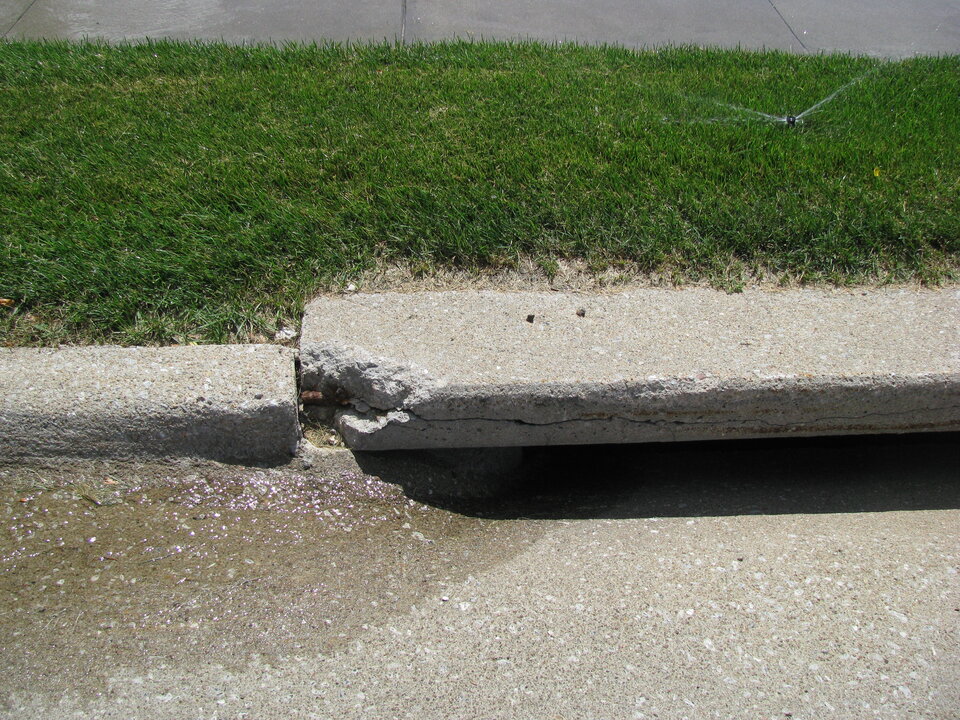Stormwater Runoff Issues from Landscapes

Storm drains in some towns have markers that read “No dumping. Drains to waterways”. These markers are part of the public education communities are doing to help protect surface water from urban run-off pollution.
Most residential areas are designed for rainwater to flow into the street and then into a storm drain. From there, it flows almost directly to a stream, river or lake, taking along what it picks up from surfaces it flows across.
As it flows, stormwater picks up plant debris like grass clippings and tree leaves, sediment from bare soil or construction zones, dirt and bird feces from rooftops, litter, pesticides that land on driveways and sidewalks, spilled oil and fuel from parking lots and more.
Each residential, business and public property contributes a small amount to runoff pollution. While the amount from an individual property may be small; when combined with pollution from other properties and with upstream and downstream pollution, it can add up to more than a water ecosystem can handle.
Runoff pollution is considered to be one of the leading causes of water pollution today and leads to impairment of streams, rivers, and lakes. The growth of toxic blue-green algae is one example of impairment promoted by excess phosphorous.
As property owners, we can do our part by keeping pollutants out of the path of stormwater and reducing the amount of water running off of our property. 'Keep it clean and slow it down to soak it in' is a motto we often use.
For example, after fertilizing lawns sweep granules off driveways, sidewalks and other impervious surfaces and place them on the lawn. Water in fertilizer after application; and avoid fertilizing if heavy rainfall is in the forecast.
After mowing, sweep grass clippings from paved areas and place them on the lawn or in a compost pile. Do not hose grass clippings or dirt from garages and driveways into the street where the next rainfall will carry them to surface water.
The same is true for tree leaves. As they begin to fall, rake them to take to yard waste recycling or add them to compost piles.
Seed bare or thin turf areas. Plant roots hold soil to reduce soil erosion from these sites. And do not dump anything down storm drains such as paint thinner, excess pesticide, or used oil. Remember, it drains directly into surface water from a storm drain.
To help slow and soak in rainfall so less runs off of a property, consider installing a rain garden or two in your landscape. Redirect downspouts so they are not pointed towards pavement. Strategically place berms or swales to help spread out rainwater from a slope or downspout.
Avoid overwatering lawns and core aerate on a regular basis to help irrigation and rainwater infiltrate into soil rather than running off a lawn.
To learn more about reducing landscape and other pollutants in stormwater that drains to surface waters; refer to the water.unl.edu website. There is also information on reducing the amount of run-off water from a property with rain gardens, landscape swales, cisterns and rain barrels, and more.
This article was reviewed by Nicole Stoner